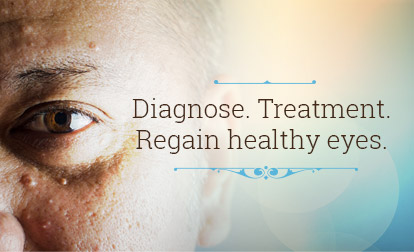Highly experienced in general ophthalmology, Dr. Huang believes that healthy eyes are essential not just for good vision but are a critical component in the overall quality of your life. In order to provide patients with the best possible care, he is diligent in staying current with the latest medical knowledge and treatments.
Common Eye Conditions and Diseases
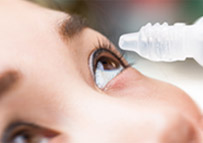
Dry Eyes
Dry eye syndrome is a condition in which there is a decrease in tear production. Symptoms include burning sensation, foreign body sensation, redness, discharge, watery and teary eyes. If untreated, this condition can lead to damage of the cornea of the eye. Dry eyes can also put patients at risk for corneal infection and affect the quality of vision.

Cataracts
Aging is the most common cause of cataract. As we age, the lens tends to become cloudy, making it difficult to see even with glasses. Other contributing causes include diabetes mellitus, autoimmune diseases, medications such as steroids, trauma and congenital anomalies.

Glaucoma
This is an eye disease commonly associated with elevated intraocular pressure that damages the optic nerve. The most common type of glaucoma is open angle glaucoma, while narrow angle glaucoma and normal tension glaucoma are less common. Vision loss from glaucoma is permanent. Risk factors for glaucoma include family history, high blood pressure, diabetes...etc.
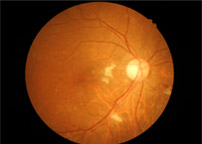
Diabetic Retinopathy
Diabetes is a medical condition in which your body can not metabolize sugar properly. Increased blood sugar level can damage blood vessels in the retina located at the back of the eye. The damaged blood vessels can leak blood or fluid in the retina. These abnormal changes can result in profound vision loss.
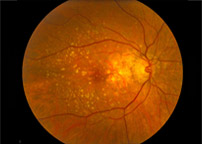
Age Related Macular Degeneration (ARMD)
A gradually progressive eye disease, ARMD is caused by degeneration of the central part of the retina known as the macula. As ARMD progresses, you lose central vision while your peripheral vision remains intact. This eye disease is the leading cause of severe vision loss in people over 60. Risk factors include aging, family history, smoking, severe near-sightedness…etc.
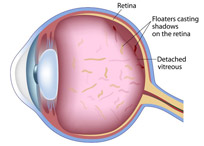
Floaters
As we age, vitreous gel, the jelly-like substance that fills the eye, degenerates and some parts condense into particles and strands that float around inside the eye. Floaters may be seen as bugs, strings, spots, or spider webs. While visually aggravating, floaters are not usually a cause for alarm. However, vitreous gel can sometimes tug on the retina and cause a retinal tear or detachment, requiring immediate treatment to prevent profound vision loss.
All rights reserved. ©Washington Eye Clinic 2018





